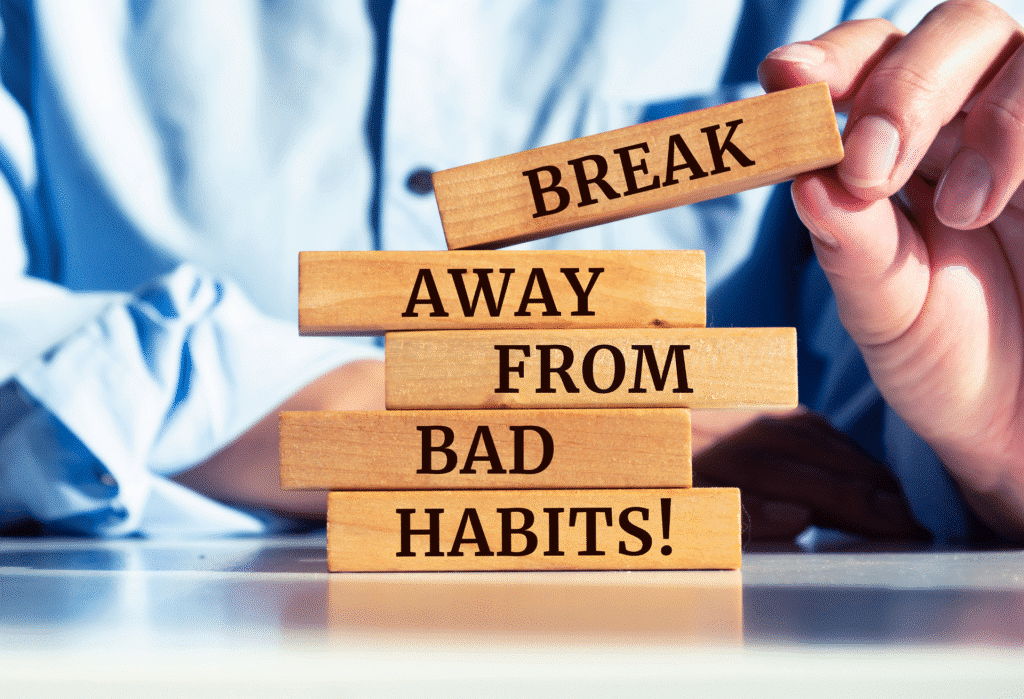The Science of Habit Formation: How to Make or Break Habits (Without Losing Your Mind)

There’s a moment that happens in every person’s life—
usually somewhere between finding a rogue sock in the refrigerator and realizing you’ve been reheating the same cup of coffee for the last three hours—when you think: something’s gotta give.
Maybe it’s the late-night scrolling. Maybe it’s the fact that your child now expects a snack every 17 minutes. Maybe it’s you—hiding in the pantry to eat a granola bar in peace. Whatever it is, welcome to the land of habits.
The good news? Habits aren’t just random routines you fall into—they’re built. Which means they can be un-built too.
Let’s talk about the science behind how that happens.
First, the Habit Loop: Why Your Brain Likes Autopilot
Habits follow a predictable loop:
- Cue: Something triggers your brain (time of day, emotion, location).
- Routine: The behavior itself (doom-scrolling, hitting snooze, grabbing chocolate).
- Reward: The brain boost you get afterward (dopamine hit, relief, distraction).
That 3-step loop is how you ended up needing coffee every morning at exactly 6:47 a.m. It’s also how your toddler somehow knows to ask for a snack every time you get on a phone call.
Creating a New Habit: Start Tiny, Celebrate Weirdly
Trying to overhaul your life with a whole new morning routine, gym schedule, gratitude journal, and kale smoothie all at once? Let’s pause. Research shows that the smaller and more consistent the habit, the more likely it is to stick.
Try this instead:
- Attach new habits to something you already do. Brush your teeth → do 5 squats. (Congrats, you now work out.)
- Make it too easy to fail. Want to read more? Start with one paragraph, not a whole chapter.
- Celebrate immediately. This can be anything from a fist pump to a whispered “Nailed it.” Don’t underestimate the power of rewarding yourself like a toddler who just peed in the potty.
Breaking a Habit: Change the Cue, Not Just the Behavior
Let’s say you want to stop stress-eating gummy bears after dinner. (Asking for a friend.)
Here’s what the behavioral research says:
- Interrupt the cue. If the kitchen is the trigger, move your after-dinner routine somewhere else. Go outside. Fold laundry. Lock the pantry. Desperate times.
- Replace the routine. Don’t just not eat the gummy bears. Replace it with something else your brain can latch onto—like tea, a walk, or a dance party with your kids that turns into chaos but at least doesn’t involve corn syrup.
- Make the old habit hard. Put barriers in place. If it takes 45 seconds to find the gummy bears and open a childproof lid, you might rethink it long enough to not go through with it.
Why Habits Matter at Mandala
We see habit loops play out every day in therapy. A child screams when asked to clean up? That scream is a routine that’s getting reinforced. A parent unintentionally gives extra attention to whining but not to asking nicely? That’s a pattern just waiting to be reshaped.
Whether it’s sleep routines, transitions, or emotional regulation, building or breaking habits boils down to this:
- Know the cue
- Adjust the routine
- Reinforce the behavior you want to see
Sounds simple—but it’s not always easy.
Your habits aren’t a reflection of your character—they’re just patterns your brain found efficient. With the right strategies, support, and some behavioral know-how, you can rewrite those patterns. One cue at a time.
And if all else fails, just remember: even your coffee habit started with a single sip.
Vicky Holland, M.A., BCBA
Director of Clinical Services
